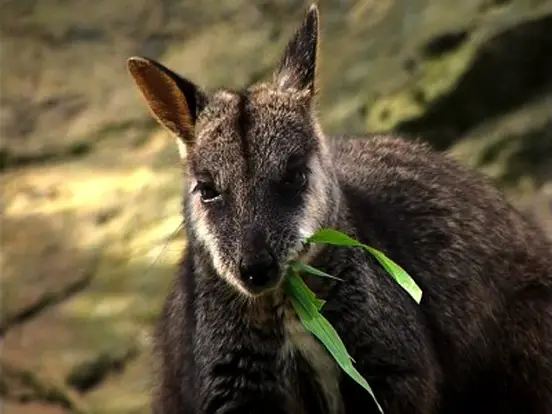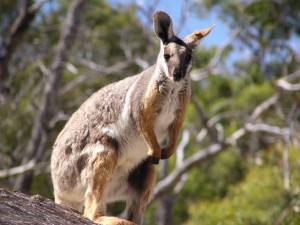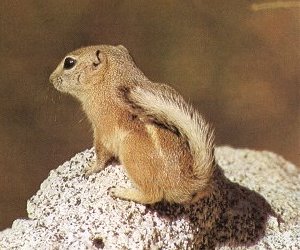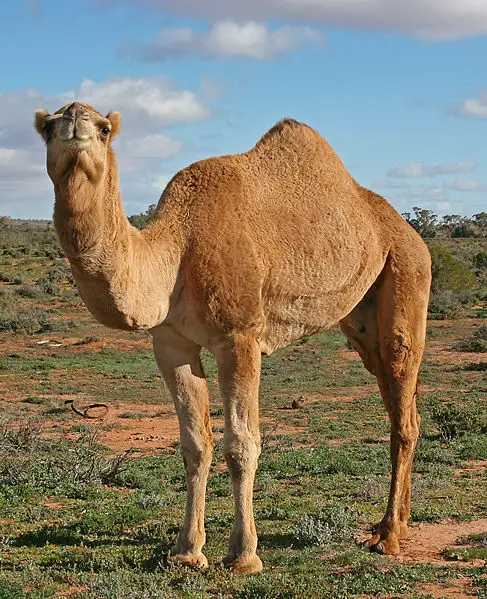Brush-tailed Rock-wallaby
Brush-tailed Rock-wallaby is an agile and very active animal, and is therefore often also called the Australian mountain goat. These small marsupials climb steep cliffs with great dexterity and they easily jump over multiple meters wide chasms.
This species of kangaroo inhabit completely all territories of Australia, although most of the population lives in the mountain areas. Brush-tailed Rock-wallabies often seek shelter in deep mountain glens. These hiding places can easily be found – the surrounding cliffs are polished completely smooth by the legs of tens or even hundreds of wallaby generations.
It’s amusing how these marsupials obtained their Latin name – the word Petrogale means “mountain cat”. This is because the first colonists that arrived to Australia indeed thought this animal was a cat. In appearance the Brush-tailed Rock-wallabies don’t really hold a resemblance to a cat, being 50-80 cm long, russet to gray fur with a white underbelly and the characteristic long, muscular kangaroo legs. Unlike many other kangaroo species, the Brush-tailed Rock-wallaby has a long tail that serves the purpose of a steering tool.
During the hot summer months, the wallaby spends most of the time in the shadow – hiding between cliffs, from where they come out only dusk and in early mornings, when the temperature is lower. During these short periods of time they have to measure long distances from the cliffs to grassy areas, in order to feed. Brush-tailed Rock-wallabies can’t climb trees and they live solely on the ground.
These wallabies didn’t actually have any natural predators until Europeans brought foxes to Australia in the nineteenth century. As the fox is faster and smarter than the dingo, many wallabies were killed until they learned to adapt to the hunting style of the foxes. If in danger, Brush-tailed Rock-wallabies freeze and clap their legs against the ground to warn other members of the group. All the group then flees, measuring long jumps and moving through paths where other animals have trouble following.
In more fruitful regions, the wallabies mate all year round, in other areas the mating period depends on the amount of grass in the surroundings. If a dry period comes when a fetus has already started developing, the mother produces less milk and the development of the young wallaby almost stops completely until a rain period comes. About 1 month after copulation, the baby moves to the mother’s pouch, where it continues growing for about 8 months. If there is enough food, the female mates again a few days after the previous baby has moved to the pouch.
In the past, kangaroo fur was very popular for making coats, especially the fur of the Brush-tailed Rock-wallaby, as it’s thicker and smoother than any other kangaroo’s. Due to the excessive hunting, in many regions their population was destroyed, but now as the demand for fur has decreased, the Brush-tailed Rock-wallabies are slowly recovering and additional help from nature enthusiasts is bringing the population back to it’s original numbers.





This is such a great resource that you are providing and you give it away for free. I enjoy seeing websites that understand the value of providing a prime resource for free. I truly loved reading your post. Thanks!
Thanks! We are glad you like it and we hope to see you around the site more. :)